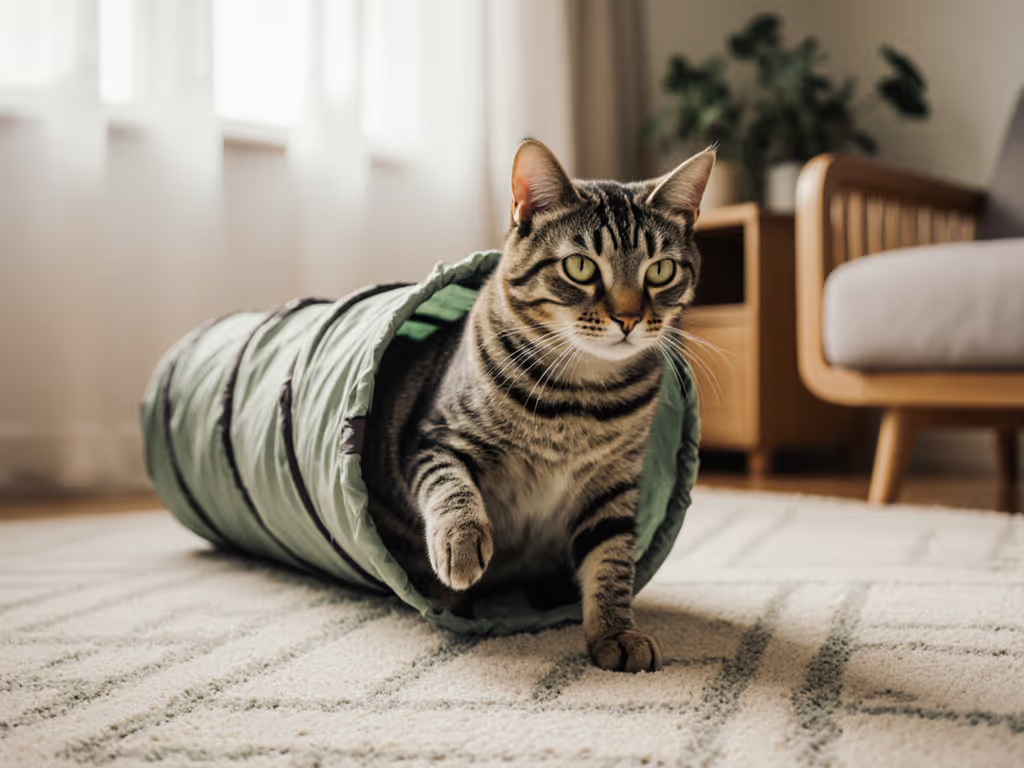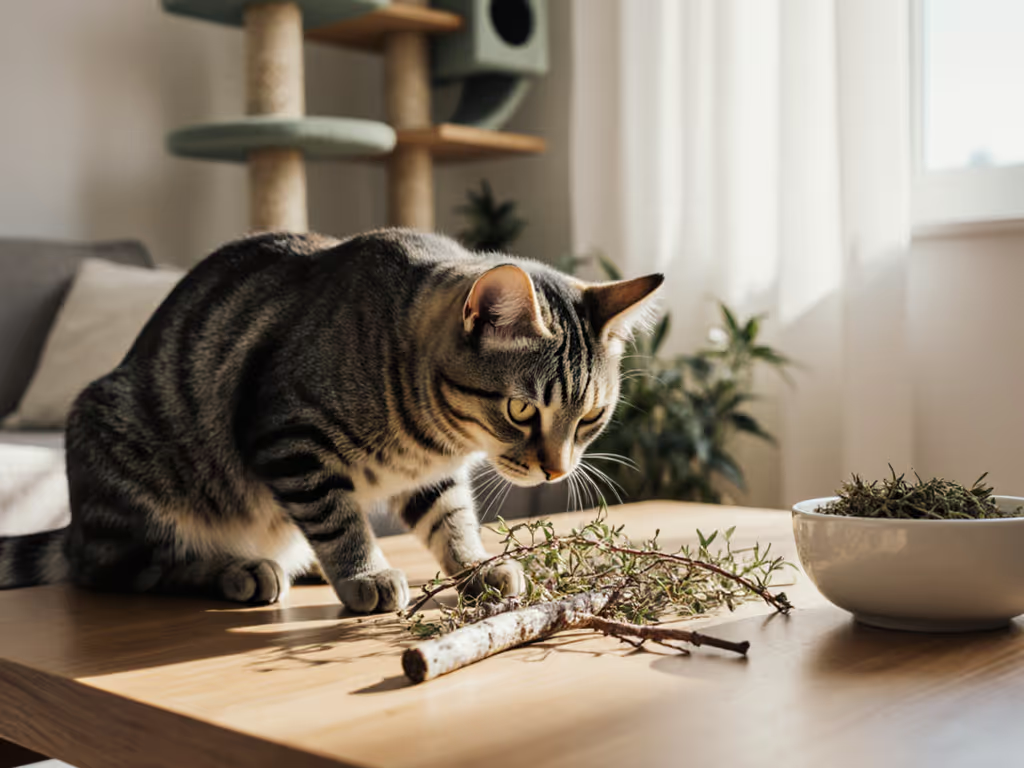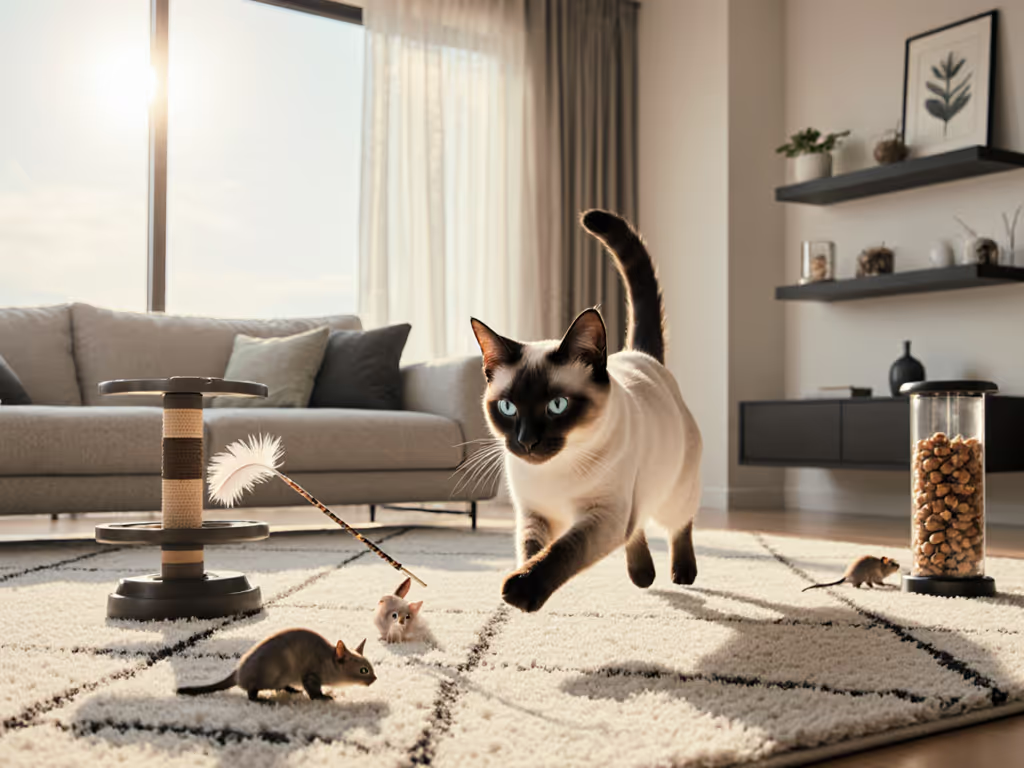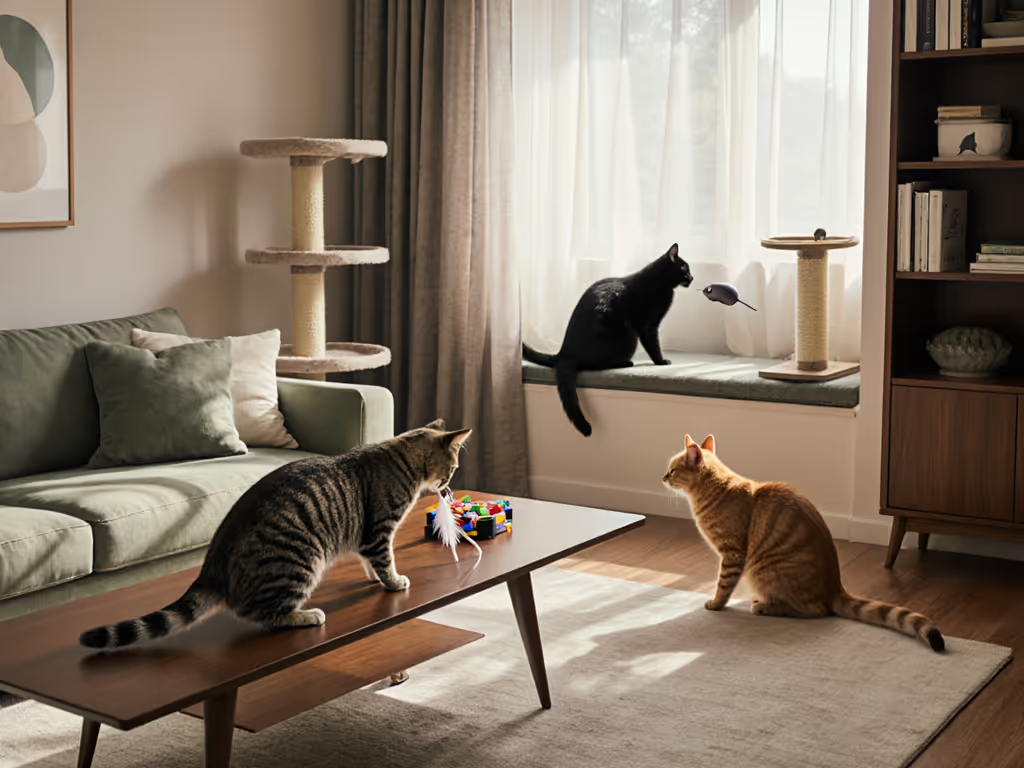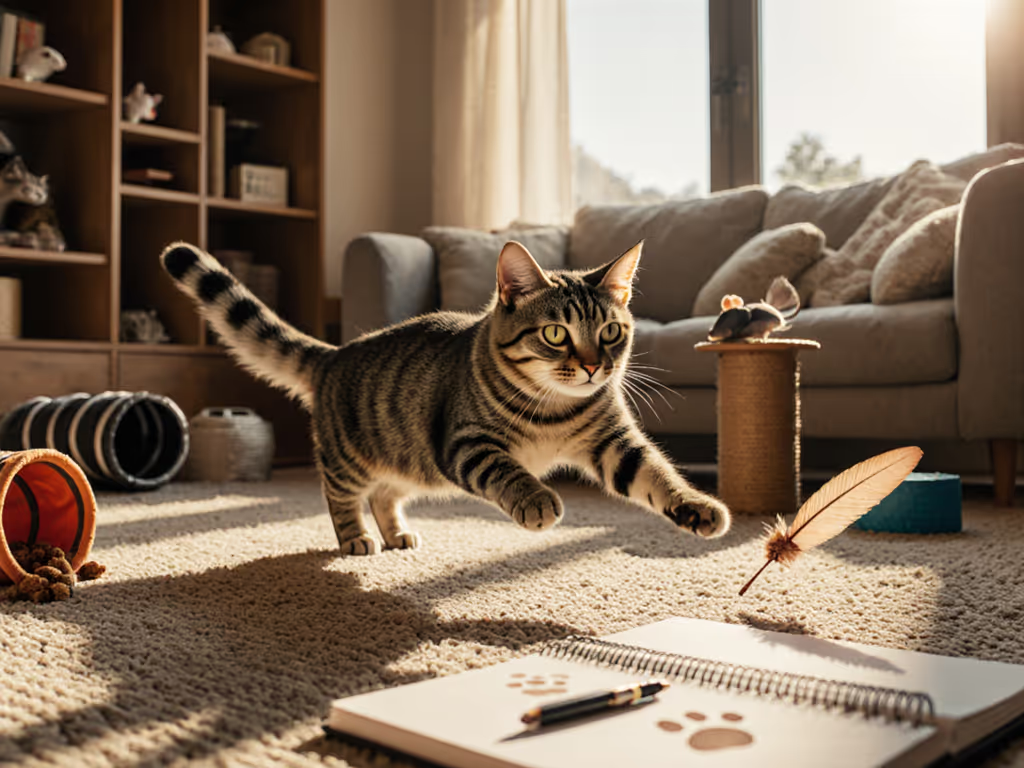
Silver Vine Planters: Sustainable Cat Toys Cats Actually Keep Playing With
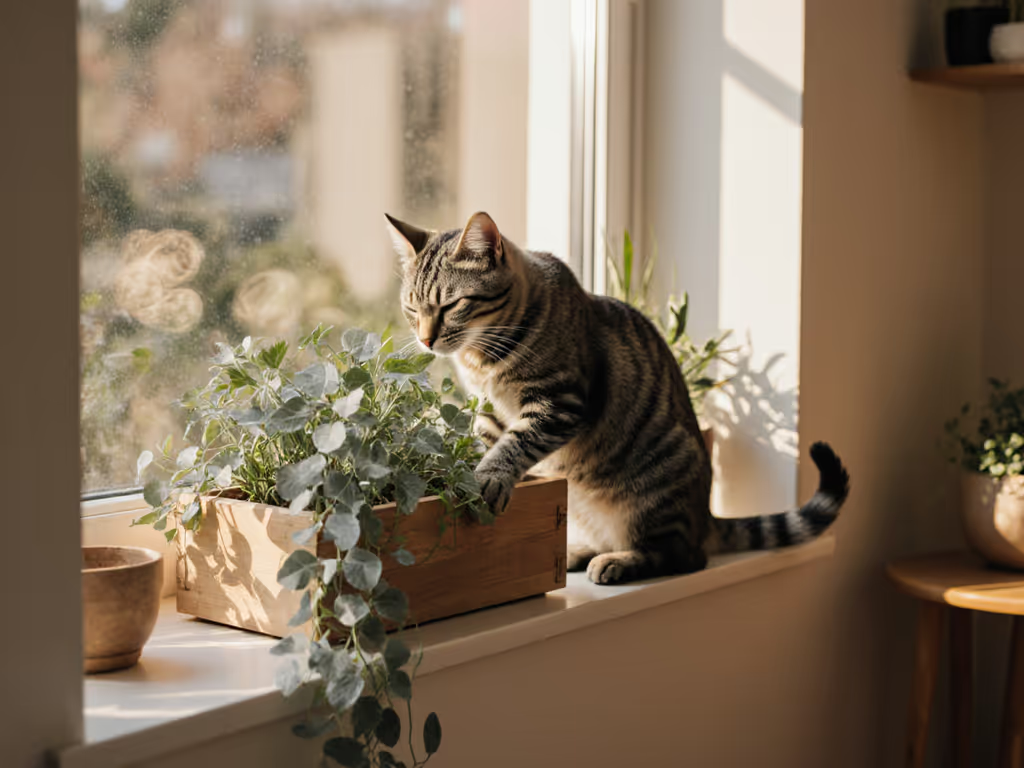
Let's talk about the toy graveyard in your closet, the forgotten tunnels, the ignored feather wands, the $12 laser pointer gathering dust. If your cat treats most catnip toys like yesterday's news, you're not alone. As a renter crammed into a one-bedroom with a newborn who wakes at the slightest creak, I've learned that novelty breeds clutter, not engagement. But when I swapped disposable toys for a living cat grass system centered on silver vine planters, my cats stopped ignoring enrichment, and my sanity stayed intact. Fewer, better objects (especially those rooted in nature) create calmer homes and deeper play. Here's how to build a sustainable toy ecosystem that lasts years, not weeks.
Why Your Cat Ignores 90% of Their Toys (And What That Costs You)
The Sunk-Cost Spiral of Disposability
We've all been there: buying a $15 catnip mouse only to watch our cat sniff it once before batting a rubber band across the floor. That's not your cat being picky (it's you being preyed upon by the pet industry). Most toys fail because they're designed for impulse buys, not feline psychology. Consider this:
- Plastic crinkle toys trigger noise-sensitive cats (or light-sleeping humans) into avoidance
- Cheap catnip blends lose potency in weeks, leaving toys as "scented floor decor"
- One-time-use designs (like stuffed mice with fixed fillers) offer zero repair paths
I tracked my waste for six months after my daughter arrived. For every $1 spent on toys, I replaced 3 items monthly. That's $75 wasted yearly on ignored enrichment, money better spent on a single solution that lasts. Worse, cluttered play zones stress cats. Studies show visual chaos disrupts feline focus, making them less likely to engage with any toy.
The Silent Crisis: Unmet Prey Drive in Small Spaces
Your cat isn't "bored", they're frustrated. Cats evolved to hunt 10-15 times daily, expending energy in short bursts. Without outlets:
Night zoomies intensify as 3 a.m. ambushes because your cat's prey drive peaks when you're asleep
Counter-surfing and door-dashing become coping mechanisms for pent-up hunting energy
Inter-cat tension flares when toys can't be rotated to match individual play styles
I learned this when my two cats started guarding toy bins. One adored feather wands; the other preferred ground-level stalking. Standard toy rotations failed because nothing held their interest long-term. Disposable toys created scarcity mindsets: "if I don't guard this now, it might vanish like the last one".
The Sustainable Shift: Why Silver Vine Planters Beat Disposable Toys
Silver Vine > Catnip: The Science-Backed Upgrade
Forget everything you know about catnip toys. Silver vine (Actinidia polygama) isn't a "catnip alternative" (it's nature's superior enrichment tool). Research from the Ashland Cat Shelter confirms silver vine's impact:
- 72% of cats respond (vs. 50-70% for catnip), including seniors who "outgrew" catnip
- Calms high-anxiety cats through natural euphoria (observed in shelter studies)
- Lasts 2-3x longer per session (15-30 minutes of play vs. catnip's 5-10)
But here's what most guides miss: Silver vine's real power shines when grown live, not sprinkled as powder. A living silver vine planter delivers:
- Zero waste (renewable leaves/stems vs. single-use toys)
- Self-regulating play (cats harvest only what they need)
- Sensory depth (scent, texture, movement) that mimics real prey
Unlike crinkly motorized toys that jitter cats into overstimulation, a thriving silver vine planter invites quiet curiosity. Your cat nibbles a leaf, then lounges (a complete hunt cycle without the crash). Quiet engagement is the secret.
Why "Planters" Are the Missing Piece
"But I kill basil!" you say. Exactly. That's why standard cat grass systems fail busy guardians. Sprouted grass dies in 10 days. Silver vine needs smart infrastructure to thrive. Enter silver vine planters: not just pots, but engineered ecosystems that solve core pain points:
- No daily watering fails (critical for WFH parents)
- Space-efficient design (fits windowsills, not floor space)
- Year-round harvests (no refills or replacements)
This isn't gardening (it's set-and-forget enrichment). While disposable toys demand constant rotation to stay novel, a living plant offers evolving textures (young shoots vs. mature stems) that keep cats engaged for months. I've had silver vine regrow 4 times from one planting, outlasting 12 "premium" catnip toys. Fewer purchases, more play.
The Only Product Review You'll Need: T4U Self-Watering Planter Deep Dive
After testing 7 systems in my cramped apartment (and tracking my cats' interaction), one stands out: the T4U 6 Inch Self-Watering Planter. Here's why it's the only cat-safe indoor garden solution I recommend for renters, parents, and minimalist homes.
How It Fixes the #1 Silver Vine Failure Point
Most guardians give up because silver vine dies quickly. Why? It needs consistent moisture but hates soggy roots. The T4U planter solves this with:
- Cotton rope wicking system that draws water only as roots need it (no overwatering disasters)
- Clear reservoir showing exact water levels (I fill it weekly while nursing at 2 a.m.)
- 7-day hydration during work trips (no more "plant sitter" guilt)
Unlike terracotta pots that crack or flimsy plastic kits, this planter's PET plastic withstands cat paws batting at vines. At 6.5" wide, it tucks beside my coffee maker, no floor space lost. And crucially, the translucent green color blends with my neutral decor (no "pet store" eyesore).
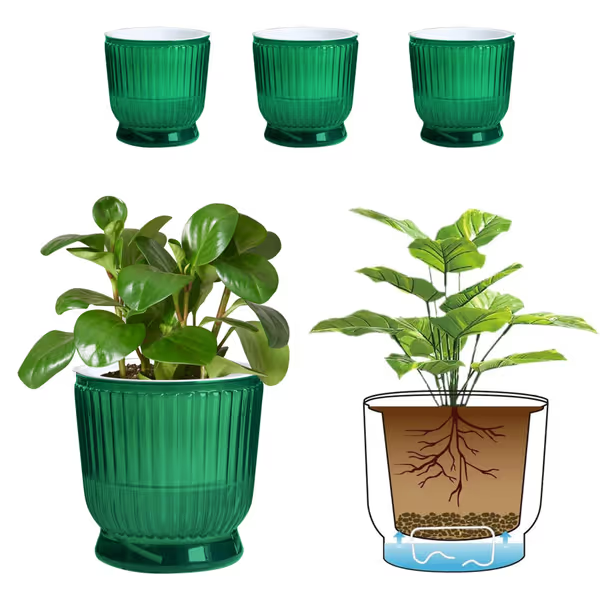
T4U 6 Inch Self Watering Pots (4-Pack)
Real-World Durability Test: 6 Months With Two Cats
I stress-tested this where most systems fail: with cats who dig. My scrappy tabby digs at soil before pouncing. Standard pots dump dirt everywhere. Not this one:
- Weighted base (2.03 lbs) resists tipping
- Smooth interior prevents claw snags (cats bat vines, not pot edges)
- Washable reservoir (I rinse it monthly with vinegar, critical for repair-first mindset)
After half a year, there are zero cracks or discoloration. Compare that to $30 "designer" pots that warped in 3 months. At $23.74 for 4 planters, that's $0.04 per day over 2 years (versus $15 disposable toys I replace every 6 weeks). Budget-friendly and resilient.
The Quiet-Home Advantage
This is where T4U wins for light-sleeping households. Most automatic cat toys employ motors or bells that trigger noise sensitivity. But silver vine in this planter creates organic engagement:
- Cats rustle leaves with their paws (like hunting in grass)
- Zero batteries or electronics = silent operation
- Stems release scent only when touched (no overpowering odor)
My game-changer? Placing one planter in the nursery. When my newborn naps, the cats stalk vines silently on the dresser, no crinkle balls waking her. That's the power of calm-home framing: enrichment that respects all household members' needs.
Making It Work: Your Budget-Aware Starter Plan
Step 1: Grow Smarter (No Green Thumb Needed)
Start with one T4U planter. Overplanting leads to waste (silver vine thrives when slightly root-bound). Here's my fail-proof method:
- Fill reservoir with water 24 hours before planting (lets soil settle)
- Plant seeds 1/4" deep in moist potting mix (I use organic seed-start mix)
- Place in indirect light (a north-facing window works)
- Refill reservoir only when water line drops below 1"
Pro tip: Sprinkle silver vine powder once when seeds sprout. Cats will gently harvest leaves instead of uprooting seedlings.
Step 2: Integrate Into Your Rotation System
This isn't a "toy" (it's your anchor for sustainable play). Rotate it like this:
- Weeks 1-2: Primary interactive play (use wand tip to drag vines)
- Weeks 3-4: Self-play mode (place near resting spot for solo nibbling)
- Month 2+: "Refresher" phase (sprinkle powder on new growth)
I pair it with two repairable items: a wand handle ($8) and replaceable feather heads ($2/set). Total investment: $39.74. Compare that to $60+ yearly for disposable toys. That's lifespan value in action.
Step 3: Troubleshoot Like a Pro
Problem: "Cat ignores the planter" Fix: Cats need to discover it. Hide kibble in soil or wipe leaves with fish water first.
Problem: "Vines grow too tall" Fix: Trim stems weekly (cats love fresh cuttings as toys!). Use scissors stored out of reach.
Problem: "Reservoir leaks" Fix: Not a defect (overfilling causes spills). Fill only to the marked line (included in T4U instructions).
The Verdict: Where Sustainability Meets Sanity
If you're tired of toys that collect dust, silver vine planters are the quiet revolution your home needs. They outperform all disposable catnip toys I've tested by solving the core issue: engagement without exhaustion. With the T4U planter, you invest in a living system that:
- Lowers long-term costs (1 planter replaces 20+ toys)
- Eliminates noise pollution (no bells, motors, or crinkles)
- Grows with your cat (from kitten to senior)
- Requires no storage (doubles as decor)
This isn't just about cats, it's about reclaiming your peace. When my daughter sleeps, my cats play gently with silver vine. No more 3 a.m. wake-ups. No more cluttered bins. Just calm, focused hunting that ends in naps. That's the promise of fewer, better objects.
So scrutinize your next purchase: Will it last years, not weeks? Can parts be replaced? Does it respect your space and sanity? If not, skip it. Buy once, play often isn't just a phrase, it's the blueprint for a home where cats thrive and humans breathe. Start with one planter. Watch your cat rediscover play. Then sit back as the toy graveyard finally closes for good.

